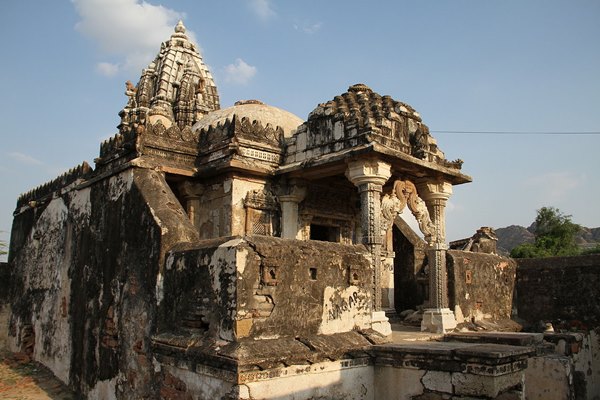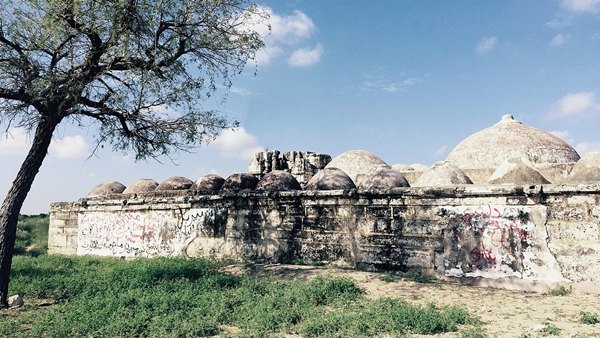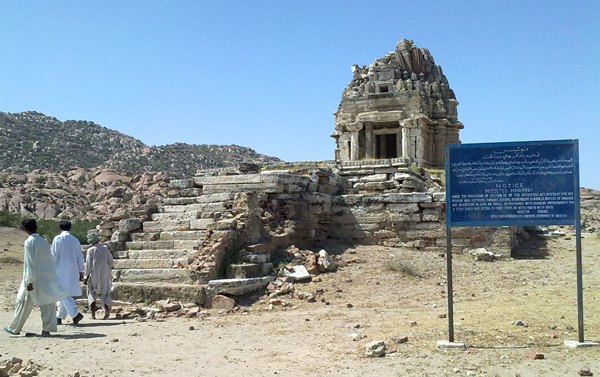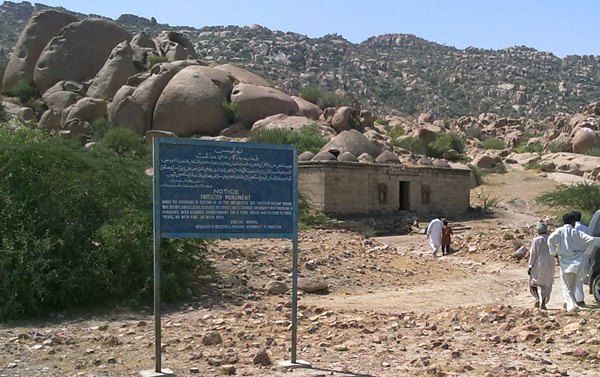Mahaveer Sanglikar
Introduction
Pakistan, a country celebrated for its rich and diverse cultural heritage, holds within its borders an often-overlooked chapter of history—the Jain temples. These ancient structures, found in various regions of Pakistan, offer a window into a period when Jainism thrived alongside other religions in the subcontinent. While many of these temples now lie in ruins, they remain as silent yet powerful reminders of the once-flourishing Jain community in this part of the world.
This article delves into the history, significance, and current state of Jain temples in Pakistan, shedding light on a forgotten yet integral part of the region’s cultural fabric.
Historical Background
Though Jainism is primarily associated with India, its influence extended beyond modern-day borders into what is now Pakistan. The region, during ancient and medieval times, was a melting pot of various cultures and religions, including Buddhism, Hinduism, and Jainism. The presence of Jainism in this area is particularly significant during the reigns of the Mauryan and Gupta empires, when the region formed an integral part of the Indian subcontinent.
The spread of Jainism to these regions was facilitated by Jain monks and merchants, who traveled extensively, establishing communities and religious institutions along the way.
During the medieval period, especially in the Sindh region, Jainism thrived due to the patronage of wealthy Jain merchants. These merchants, who played a crucial role in the trade networks of the time, used their wealth to build temples and support religious activities. These temples were not only places of worship but also served as centers of learning, culture, and community life. The architecture of these temples reflected the artistic and cultural influences of the period, blending local styles with the distinct Jain architectural elements.
Notable Jain Temples in Pakistan
Jain Temples of Nagarparkar, Sindh

Nagarparkar, located in the Tharparkar district of Sindh, is perhaps the most well-known site of Jain heritage in Pakistan. The region is dotted with a number of Jain temples, some of which are remarkably well-preserved. Nagarparkar was historically a major center of Jainism, and the temples here reflect the religious and cultural significance of the area.
The most famous of these temples is the Gori Temple, also known as the Gori Mandir. Constructed in 1375 AD, the Gori Temple is dedicated to Lord Parshvanatha, the 23rd Tirthankara of Jainism. The temple is built from white marble and features intricate carvings and sculptures that depict various aspects of Jain mythology and cosmology.

The temple’s architecture is a fine example of Jain temple design, with its elaborate domes, finely carved pillars, and detailed frescoes. Despite the passage of time and the harsh desert environment, the Gori Temple has managed to retain much of its original beauty, making it a significant site for both historians and devotees.
In addition to the Gori Temple, Nagarparkar is home to several other Jain temples, including the Bhodesar Temples. These temples, though smaller in scale, are equally important in terms of their historical and cultural value. The Bhodesar Temples are known for their unique blend of Jain and local architectural styles, which reflect the cross-cultural interactions that took place in the region.

Jain Temple in Karachi, Sindh
Karachi, the bustling metropolis and financial hub of Pakistan, was once home to a vibrant Jain community. The most prominent Jain temple in the city was located in the Saddar area, a district known for its architectural landmarks and cultural significance. The temple, built in 1890, was a focal point for the Jain community in Karachi.
The Karachi Jain Temple was renowned for its elaborate architecture, featuring intricate carvings, ornate domes, and vibrant frescoes. The temple’s design was influenced by both traditional Jain architecture and the colonial style prevalent in the region at the time. The temple served as a place of worship, as well as a community center where members of the Jain community would gather for religious ceremonies, festivals, and social events.
Unfortunately, the Karachi Jain Temple met a tragic fate. Following the partition of India in 1947, the majority of the Jain community migrated to India, leaving the temple abandoned. Over the years, the temple fell into disrepair, and in the 1990s, it was demolished to make way for new developments. Today, the site of the once-grand temple is occupied by modern buildings, and only a few remnants of its existence remain in the memories of the older generation who witnessed its splendor.
Jain Temple in Umarkot, Sindh
Umarkot, a city with a rich historical legacy, is also home to a Jain temple that highlights the religious diversity of the region. Umarkot is perhaps best known as the birthplace of Mughal Emperor Akbar, but it also has a significant Jain heritage. The Jain temple in Umarkot is dedicated to Lord Parshvanatha, the 23rd Tirthankara, and stands as a testament to the once-thriving Jain community in the area.
The Umarkot Jain Temple, though not as grand as the temples of Nagarparkar, is an important site for understanding the spread of Jainism in the region. The temple’s architecture reflects the simpler, more austere style typical of Jain temples built in smaller towns. Despite its modest size, the temple holds great religious significance for the Jain community and serves as a reminder of the region’s pluralistic past.
Jain Temples in Punjab and Balochistan
While Sindh is the primary region associated with Jain temples in Pakistan, remnants of Jain heritage can also be found in the provinces of Punjab and Balochistan. The cities of Multan and Lahore, both of which have long histories as cultural and religious centers, once had Jain temples. These temples, however, have largely been lost to time due to neglect, urban development, and a lack of preservation efforts.
In Balochistan, the town of Kalat was historically a center of Jain activity. The region, known for its rugged landscapes and diverse cultures, was home to a small but vibrant Jain community. The Jain temples of Kalat, though now mostly in ruins, are evidence of the religion’s reach and influence in this remote area. The temples’ architecture, though weathered by time, still displays the characteristic features of Jain temple design, such as domed roofs and intricately carved stonework.
Cultural Significance
The Jain temples in Pakistan are more than just religious structures; they are symbols of a rich and diverse cultural heritage that spans centuries. These temples reflect the religious tolerance and cultural pluralism that characterized the region in ancient and medieval times. The presence of Jain temples alongside Hindu temples, Buddhist stupas, and Islamic mosques is a testament to the harmonious coexistence of different religious communities in the region.
The temples also offer insights into the socio-economic dynamics of the time. The Jain community, known for its mercantile activities, played a significant role in the economic life of the region. Their wealth and influence are evident in the grandeur of the temples they built, which were not only places of worship but also centers of trade, education, and cultural exchange.
Moreover, the temples are important repositories of art and architecture. The intricate carvings, sculptures, and frescoes found in these temples are valuable examples of the artistic traditions of the time. They depict various aspects of Jain cosmology, mythology, and religious practices, providing scholars and historians with valuable insights into the religious and cultural life of the period.
Current Status and Preservation Efforts
The partition of India in 1947 marked a significant turning point for the Jain community in Pakistan. The majority of the community migrated to India, leaving behind their temples and other cultural heritage. As a result, many of these temples were abandoned and fell into disrepair. Over the decades, they suffered from neglect, vandalism, and the ravages of time.
In recent years, however, there has been a growing awareness of the need to preserve and protect these temples as important cultural and historical landmarks. Efforts have been made by local communities, historians, and conservationists to restore and maintain these ancient structures. In some cases, the temples have been declared protected heritage sites by the government, and restoration work has been initiated.
For example, the temples in Nagarparkar have been the focus of conservation efforts, with the aim of preserving their unique architectural and artistic heritage. Similarly, there have been calls to protect and restore the remaining Jain temples in other parts of Pakistan, recognizing their importance as part of the country’s diverse cultural heritage.
However, these efforts face significant challenges. Limited financial resources, lack of expertise in conservation techniques, and the remote locations of some temples make restoration work difficult. Moreover, the temples’ religious significance is not as widely recognized as that of other heritage sites, which can lead to a lack of public support for preservation efforts.
Conclusion
The Jain temples in Pakistan are a forgotten yet integral part of the region’s cultural and religious history. These ancient structures, with their exquisite architecture and deep historical significance, are reminders of the rich cultural diversity that once flourished in the region. As efforts to preserve these temples continue, they offer a unique opportunity to reconnect with a chapter of the subcontinent’s history that has been largely overlooked.
*Mahaveer Sanglikar is a Jain Scholar, Author, Social Activist, and Senior Numerologist.
You May Like to Read
Jain Community: Achievements, Contributions and Influence
Shri Parshwa Pradnyalaya Jain Teerth, Talegaon
Understanding Jainism: A Comprehensive Overview
Barrister Virchand Gandhi: A Bridge Builder Among Faiths
The Influence of Jain Philosophy on Pythagoras
Jain Mission
Online Hindi Magazine
TheyWon
English Short Stories & Articles
Numerology & Graphology (Articles on Numerology and Graphology)
